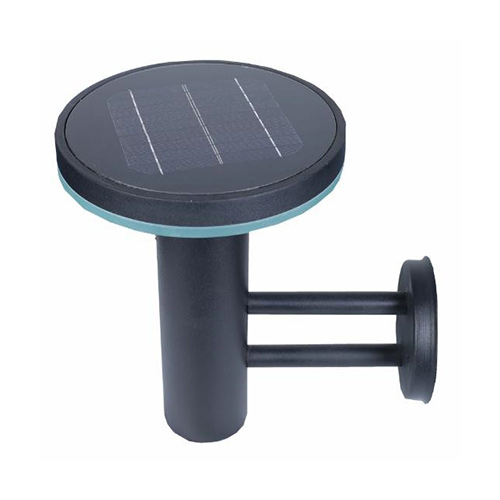Today, LED street lights are becoming an increasingly viable alternative to traditional street lighting using HPS.
There is a global shift from national governments, municipalities and city planners seeking to provide their residents with more modern, brighter, efficient, safer and cleaner lighting solutions.
In this article, we shine a light on the long-term benefits that LED street lights promise for modern cities and how they can help save millions.
Increasing Energy Demands
According to the latest estimates, the world population is expected to exceed 8 billion by 2025.
More than half [57.5%] of this number will reside in urban areas that require infrastructure and services to maintain and improve quality of life, promote business growth and development, and provide a healthy and safe environment for residents.
Key among these services is electricity, without which no modern society can function. Driven by this growing population, energy providers and the governments that regulate them race to offer solutions. In some regions, such as Asia and Africa, energy supplies are expected to grow by two to three times as these countries build the infrastructure needed to keep up with population growth.
The trend is not limited to developing countries. Although post-industrial countries are not facing population growth at the same rate as developing countries, they are struggling with problems such as aging infrastructure and inefficient outdated technologies.
Both developing and post-industrial countries face daunting capital costs to build or improve their infrastructure while allowing for a manageable level of debt.
Getting Started with Change
While not a panacea for the problem, compelling solutions to specific challenges are emerging that will enable governments to save millions in energy costs, improved efficiency and long-term maintenance costs.
One of these areas is the conversion of traditional street lighting technology into greener and more efficient solutions such as LED street lights.
Benefits of Led Street Lights vs HPS Street Lights
HPS Street Lamp
Conventional street lighting consists of high-pressure sodium lamps (HPS) to illuminate streets and highways, both in city centers and rural towns and on side roads. However, as growth increases and competition for capital becomes more intense, this technology is not only outdated and inefficient, but also less effective and of lower quality than LED lights.
LED lights
To better understand the performance of LED versus HPS, there are several key advantages to consider:
Energy efficiency
One of the biggest benefits of LED street lights is in the overall system efficiency.
Compared to HPS lamps, LED lamps have a similar efficiency degradation at the end of their life. But the difference lies in the overall lifespan of LED lighting with LEDs that last 4-10 times longer depending on the application.
LED lights also have a higher light output ratio (LOR), reaching a LOR of mid-70% at best, compared to HPS lighting, which in some case studies has shown the LOR for LED lighting as close to 100%.
Combined with the length of its life is the efficiency of visible light emissions. HPS lighting has a resource efficiency of between 50 and 160 lumens per watt, compared to 37-120 lumens per watt for LED.
However, it is often multifaceted or can be shaded to counteract this effect, resulting in a lower light efficacy. This results in energy consumption of light that does not reach the target area or is absorbed by luminaires that generate heat.
With a much higher luminous efficacy, LED lighting ensures that almost all the energy used to create light is converted into visible light. Case studies have shown up to 15% improvement in luminous efficiency for LED compared to HPS.
Improved Light Quality
In addition to much higher efficiency, LED lights provide better quality and more optimized illumination for target areas.
Using the Kelvin color temperature rating, the Associated Color Index (CCI) describes the color appearance of light on a scale based on the Kelvin temperature compared to sunlight. Using this scale, “noon sunlight” is expressed as 4000K-6000K.
This gives buyers a wider choice depending on end use and allows customization of lighting for areas requiring lower CCI for ambiance as well as areas requiring higher "simulated daylight" for critical roads, avenues, parking lots and pedestrians.
LED lighting also has a much greater Color Rendering Index [CRI] compared to HPS. HPS lighting has a CRI of 24/100 while LED lighting has a CRI of 80+/100.
As the color is distorted for illumination with low CRI, this makes objects illuminated under LED light look more realistic and natural compared to yellow HPS light.
Combined with higher CCI, higher CRI allows for safer routes as objects can be identified sooner and in full color. This also has an impact on security, acting as an additional deterrent against crime.
Social Costs
While there is a "majority" effect for many green efforts around the world, there are also legitimate concerns for local, regional and national governments that affect economic health.
Corporate organizations looking to settle in various corporate zones, free trade zones and other promoted industrial zones are often keenly aware of their brand reputation and influence.
A real effort to develop infrastructure that is smart, efficient, and reduces carbon and ecological footprints can make the difference between an empty industrial park and an occupied industrial park.
Compared to HPS lighting, LED lights emit very little forward heat to the environment. In addition to the global warming problems, heat dissipation represents inefficient use of electricity resources, increasing the demand for electricity potentially generated by fossil fuels.
This is a very strong application for LED, with sustainability issues being most critical in countries where population growth is expected the most.
Unlike HPS lighting, LED lights are scalable from very small to very large applications. This "customizability" means that LED lighting can be sized to use only the required electrical volume. This customization capability makes LED lighting more agile and therefore more cost-effective than HPS lights.
While city planning for population growth is a fundamental concern for all governments, one of the most intriguing benefits of LED lighting is its suitability for remote installation of solar power.
Solar LED street lights can operate efficiently with the use of solar panels connected directly to the light structure or drawn from a local solar array. This provides safe, efficient and natural lighting in areas that might have been cost-cutting before. As an alternative to running power lines, solar power for LED lighting has both urban and rural applications for cost savings and can be used as both a temporary and permanent solution.
Preparing for Change
As the global population continues to grow, the need for better and more efficient infrastructure to survive grows.
The most effective way to do this with agile solutions that attack challenges on several fronts at once.
LED lighting is one such solution that enables governments, planners, and the procurement groups that serve them to include a solution to reduce and manage cost at multiple levels.
For those tasked with capital planning for critical infrastructure within the government, LED street lights offer an energy-efficient solution that uses 50-70% less energy than traditional incandescent lighting such as HPS.
With a longer service life and lower maintenance requirements, personnel can be utilized more effectively in other infrastructure needs or labor costs can be realized directly. It also significantly reduces a city's ecological footprint and creates safer roads and streets that are cheaper to maintain. For those looking to outsource services and provide municipalities, national governments and private entities with a solution that allows them to cut costs and manage their electricity needs, LED lighting can provide these governments with optimum lighting at a rate that saves millions in cost.
When combined with other emerging technologies such as the application of IoT in the form of Smart City Systems, these cost reductions will continue to accelerate as an agile, customizable and cheaper alternative to HPS lighting.
You can contact us to discuss the unique needs of your city network to select the most suitable lighting solution.
Our ..
₺52,250
Ex Tax:₺52,250
The excite..
₺69,800
Ex Tax:₺69,800
&nbs..
₺42,250
Ex Tax:₺42,250
The excite..
₺24,350
Ex Tax:₺24,350
Our Soli L..
₺18,400
Ex Tax:₺18,400
&nbs..
₺6,450
Ex Tax:₺6,450
Our ..
₺8,700
Ex Tax:₺8,700
The excite..
₺26,600
Ex Tax:₺26,600
LED ..
₺5,250
Ex Tax:₺5,250
Road..
₺6,600
Ex Tax:₺6,600
About LED Flood Lights
- LED Flood Light Buying Guide
- Brain Of Led Flood Lights : LED Flood Light Drivers
- Can A Floodlight Be Used Instead Of Street Lights?
- Are LED Lights Suitable for Hazardous Locations?
- About High Bay and Low Bay Lighting
- 10 Benefits of LED Floodlights for Outdoor Lighting
- Main Factors of Outdoor LED Lighting Design
- Solar Floodlight
- Smart and Human Centered Lighting
- 4 Lighting Design For Post-Covid
- Health Risks That Are Actually Myth About LED Lights
- Things to Avoid When Upgrading Your Lighting Style to LED
- The Future of LED Lighting
- High Power LED Floodlight
- About Amount of Light And Light Quality
- LED Stadium Lighting Information
- Performance of LED Lights in Cold Weather
Usage Areas
- Sports Lighting
- How To Choose Stadium Lighting Company
- Aircraft Hangar Tips
- LED Warehouse Lighting
- Automotive Showroom Lighting
- Safety and Operational Tips for Light Towers
- Advantages and Applications of LED Street Lights
- How LED Street Lights Can Save Citizens Millions of Liras
- Outdoor LED Lighting
- Is LED Industry Evolving?
- LED For Car Parks
- Solar Street Lights
- Use of LEDs in Tunnel Lighting
- LED Lights for Your Garden Inside Your Home
- Solar Street Lights Calculation and Sizing





















